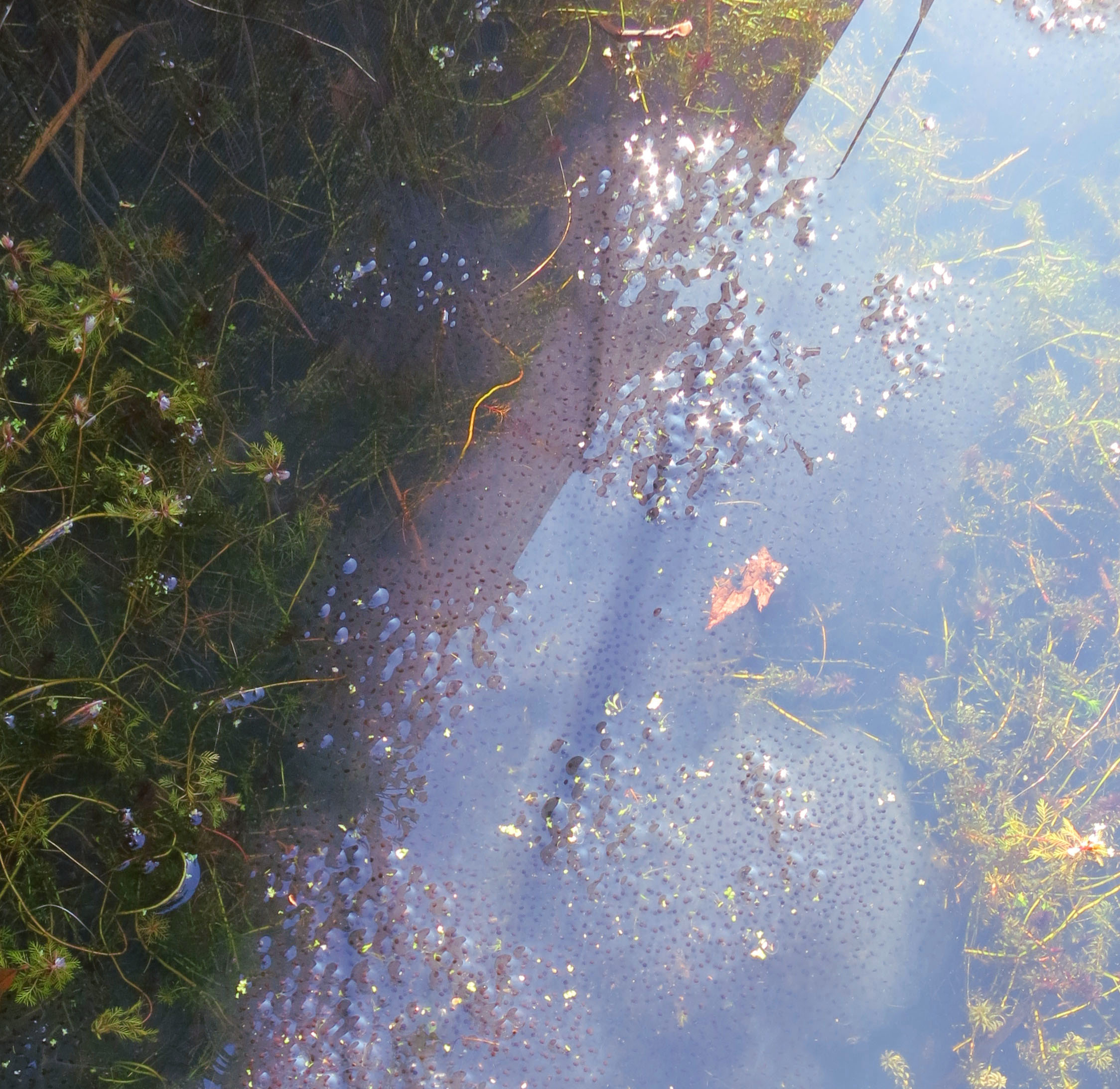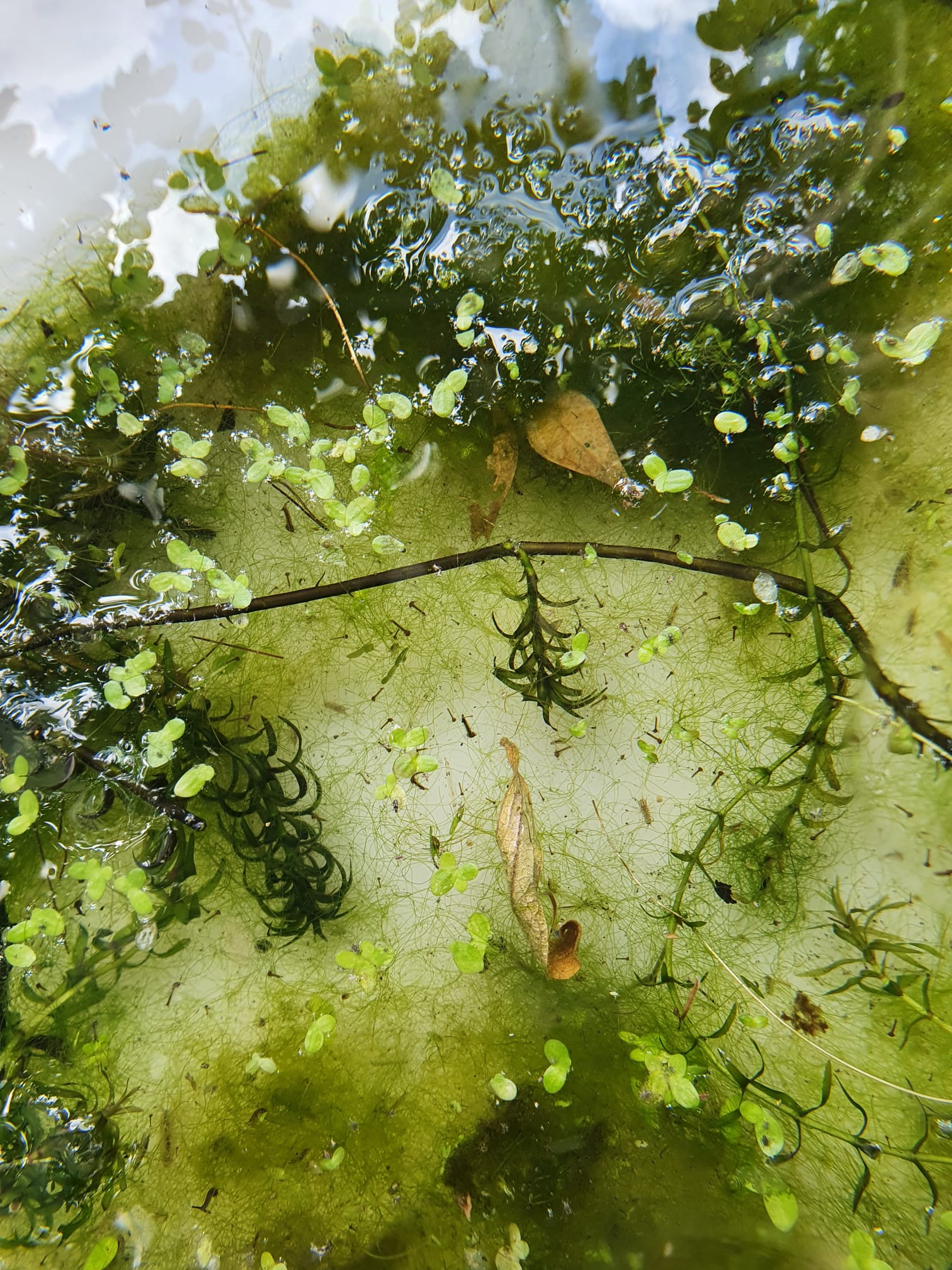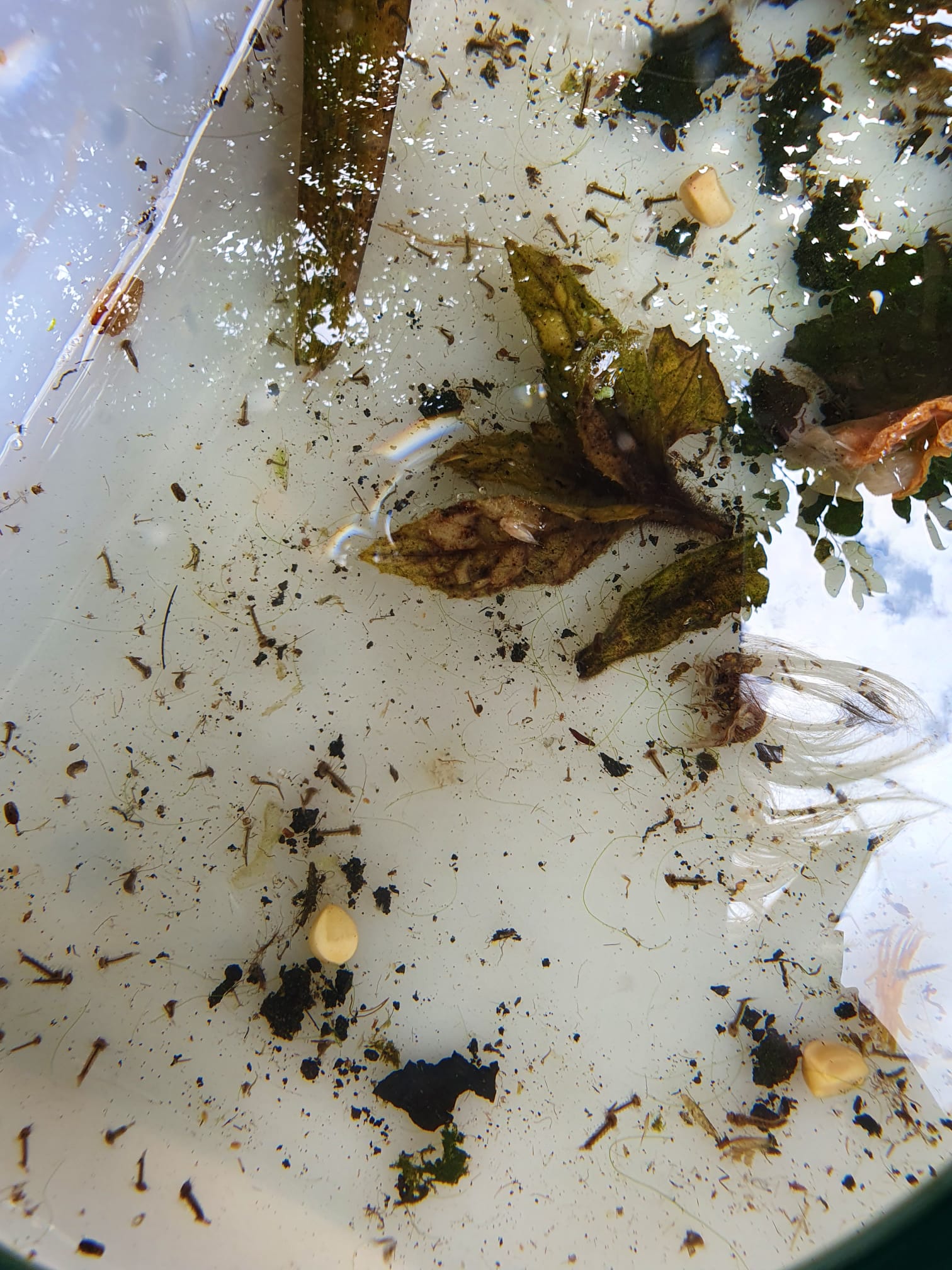We are blessed with two ponds at Crossbones: the infinity pond (below left) and the eco pond (below right). The infinity pond sits directly beneath the pyramid in the garden’s north-west corner, placing a downward facing triangle at the foot of an upward facing one, gesturing to earth and sky simultaneously, bridging the realms inhabited by the dead and the living. The eco pond nestles around the edge of the Goose’s Wing, which draws visitors to Crossbones into a protective embrace as they enter the site. A hand-carved gutter snakes down to the pond from beneath the resident gargoyle – styled on the Bishop of Winchester, medieval Southwark’s lord of the locale – feeding the pond with the rain that falls onto the Goose’s Wing.


At a recent community biodiversity monitoring event, we had the opportunity to take a closer look at the forms of life that inhabit our two ponds. For many people involved with the site, the eco pond at Crossbones has been a place to reconnect with the childhood fascination of watching spawn turn to tadpoles. It is not unusual to see frogs hopping about in the infinity beds. But even so, we were amazed to learn just how lively the ponds really were!

We used a simple bit of kit – pond dipping trays – to collect samples from each pond. For a DIY version, any light-coloured bowl or container could be used instead. These dipping trays showed us what our eyes couldn’t see against the dark depths of the pond – that every inch of water was teeming with invertebrate life. The eco pond was particularly brimming with activity, but what surprised me the most was how many critters were also present in the infinity pond. Since it is lined with lead, and the frogs don’t seem to lay there, I had thought it was rather inert, and more of an ornamental than an ecological feature. But there was plenty of diversity to be seen in our sample, including a few bits of stray pearl jewellery.

Across the two ponds, we recorded ethereal-looking glassworms or phantom midge larvae, freshwater hoglice (much like a fully aquatic woodlouse), stonefly nymphs, pondskaters, leeches, round-headed worms, swimming mayfly nymphs, hairworms, springtails, and water mites. These were our most educated guesses with the help of Jon Best, ecology officer for Southwark Council, and some very handy ID guides! But this list of species is only scratching the surface of the true diversity of the ponds, as many of the species were too small or tricky for us to identify with our human, imperfect and largely untrained eyes.

To see the documentation of the pond survey, including some beautiful illustrations by our volunteers, you can view or download our record of the day here.

One response to “Pond life”
Thanks for your blog, nice to read. Do not stop.